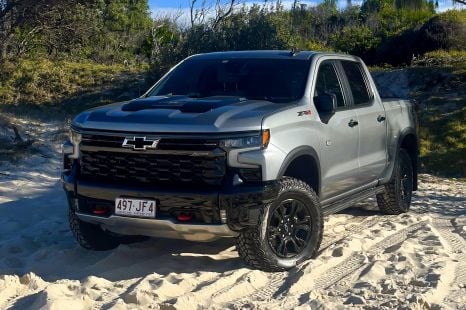

William Stopford
2025 Chevrolet Silverado ZR2 review
1 Month Ago
The Mazda BT-50 LE is the brand's latest addition to the range. It's only available in one colour and has a raft of genuine accessories.
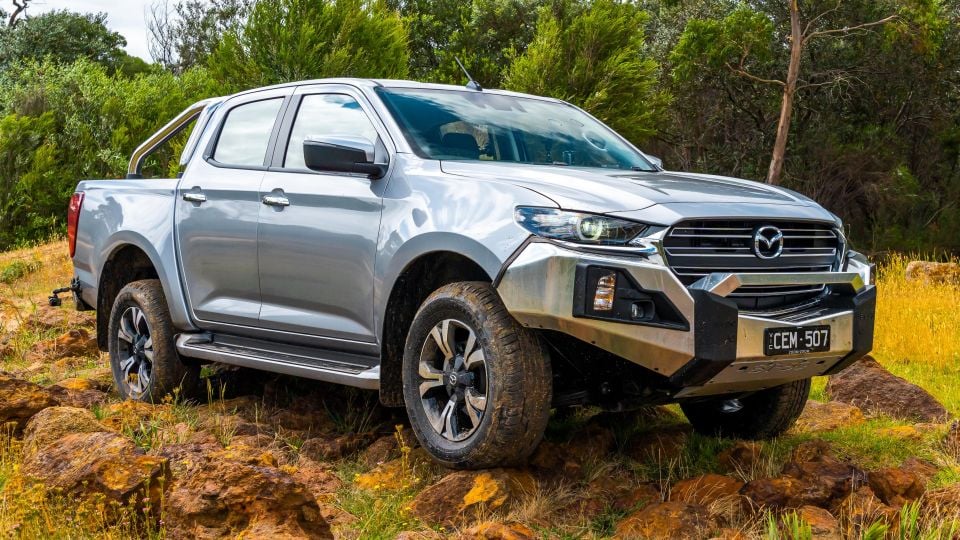
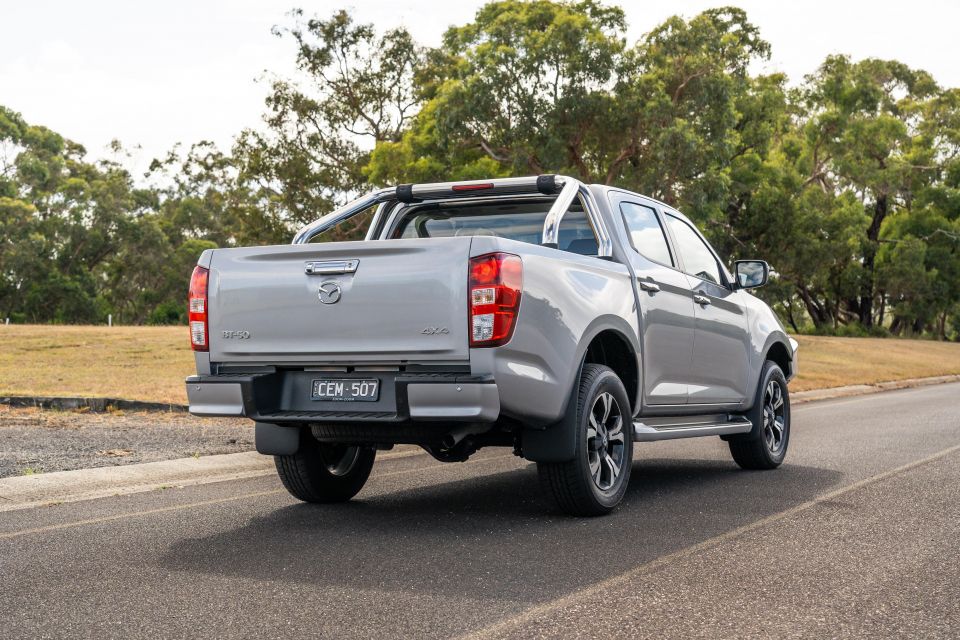

Quickly see how this car stacks up against its competition. Select any benchmark to see more details.
Where expert car reviews meet expert car buying – CarExpert gives you trusted advice, personalised service and real savings on your next new car.
The current-generation Mazda BT-50 has been on sale now for over two years now and has been around long enough to see the segment move on with the launch of the new Ford Ranger.

Based on the Isuzu D-Max, the BT-50 received an update last year which saw the introduction of a new range-topping SP trim, along with entry-level variants featuring a smaller 1.9-litre turbo-diesel engine.
For the 2023, Mazda Australia has axed a number of up-spec manuals, bumped up the priced of existing cars, and also introduced the new accessorised variant tested here.
The 2023 Mazda BT-50 LE is based on the mid-spec XTR and is priced from $64,295 before on-road costs. It’s only available in dual-cab pickup automatic form with Ingot Silver metallic paint.
It has a number of genuine accessories as standard including a single-hooped polished alloy bull bar, a polished sports bar with an integrated brake light, and a heavy-duty tub liner.
There aren’t any added luxury features though, unlike other Mazda LE variants, and it’s still powered by a 3.0-litre four-cylinder turbo-diesel engine producing 150kW and 450Nm.
Does the Mazda BT-50 LE with its additional accessories do enough to capture your attention in a competitive segment that includes the likes of the Ford Ranger, Toyota HiLux, and Isuzu D-Max?
The BT-50 LE dual-cab pickup automatic is the third-most expensive variant in the range, undercutting the now auto-only SP and Thunder dual-cab pickup variants.

It’s priced from $64,295 before on-road costs, with Mazda currently advertising a drive-away price of $68,882 for Victorian buyers (each state has slightly different taxes). The BT-50 LE is based on the BT-50 XTR, which is $5165 cheaper at $59,130 before on-roads.
Mazda has added a number of genuine accessories to the LE, and claims opting for it represents a saving of around $2500 over specifying the same accessories separately on an XTR.
The BT-50 LE is also $1785 more expensive than the GT ($62,510) that does without the genuine accessories, but picks up front parking sensors, remote engine start, and brown leather upholstery with powered and heated front seats, among other kit.
The BT-50’s closest competitor is its twin-under-the-skin, the Isuzu D-Max.

In LS-U+ dual-cab pickup automatic guise it’s priced from $63,500 before on-roads. Although this particular D-Max variant misses out on the bull bar and sports bar, it features leather-accented upholstery with heated front seats instead.
Other similarly-priced rivals include the Ford Ranger Sport Bi-Turbo dual-cab pickup ($64,490), and Toyota HiLux SR5+ dual-cab pickup auto ($64,430). It’ll also go up against the Volkswagen Amarok Style TDI500 ($66,990) come April.
Other notable, slightly cheaper rivals include the Nissan Navara PRO-4X dual-cab pickup auto ($60,655), and Mitsubishi Triton GSR dual-cab pickup auto ($56,940).
The Mazda BT-50 LE is based on the mid-spec XTR, so there aren’t really too many surprises if you’ve already taken a look our previous XTR review. You’ll also see plenty of similarities to the related D-Max, which recently received an update.
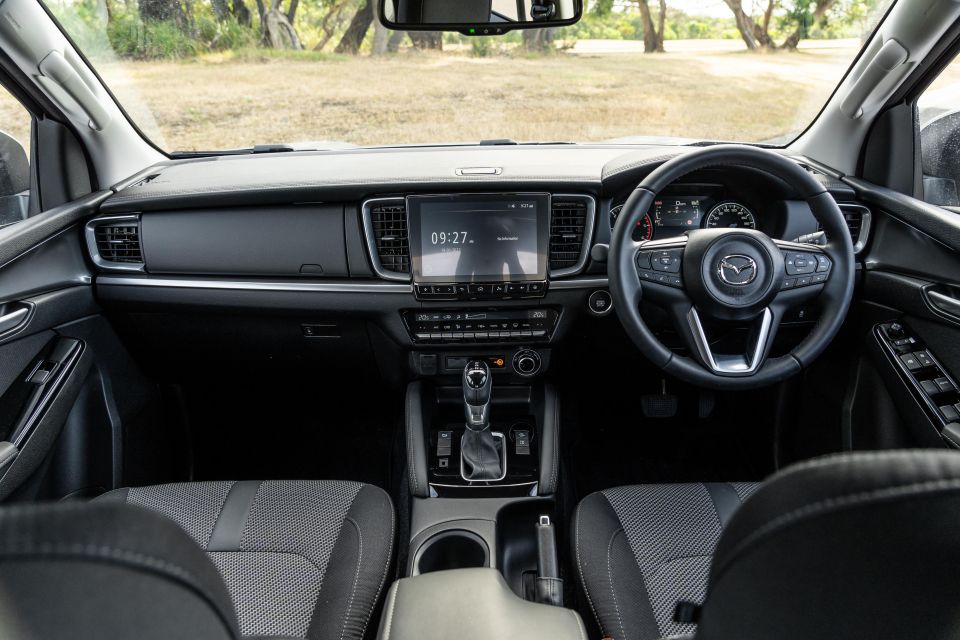
The hard-wearing fabric seats in the LE are almost sporty-looking with plenty of thigh, torso, and shoulder support. They have a grey two-tone design with little strips of neoprene-like material on the seat base and back.
Both the front seats are entirely manually adjustable, although the driver’s seat gets electric lumbar support, which makes an already comfortable driving position even better.
The steering wheel is wrapped in leather and feels absolutely delicious to hold. It’s buttery soft which is something that not a lot of workhorse dual-cab utes can claim. All the buttons on the steering wheel have a tactile click, adding to the feeling of quality.
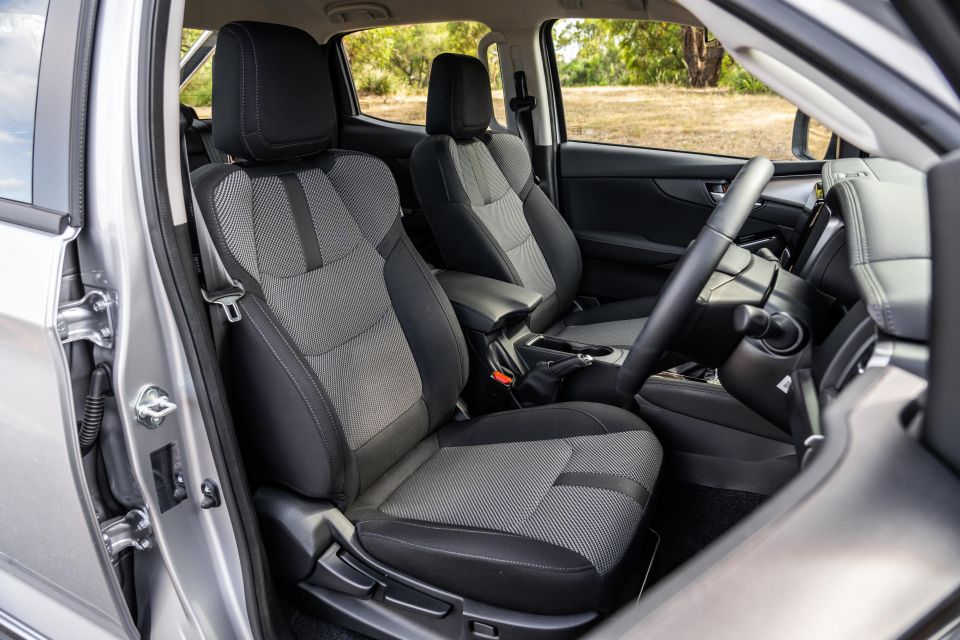
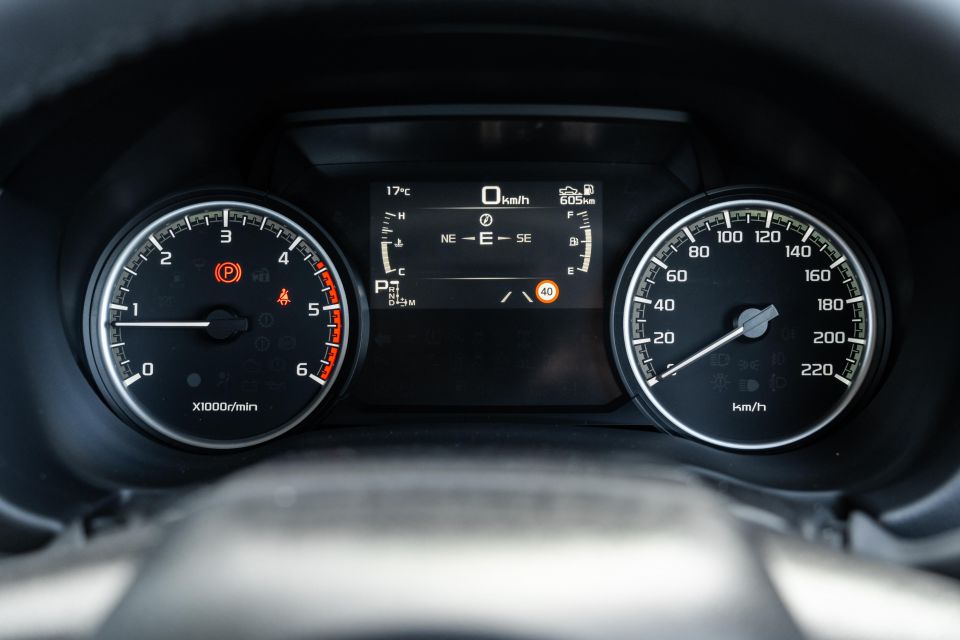
Ahead of the driver are a set of traditional analogue dials and a small 4.2-inch instrument cluster screen which tells you all you really need to know.
I left the digital screen in the ‘Trip A’ page showing distance travelled, average fuel economy, and average speed for the trip. There are number of other pages for the display including ‘Trip B’, fuel economy, compass, music, adaptive cruise, and four-wheel drive status.
You can get lost quite easily in the trip meter’s settings, as it feels like there’s an option for everything. It’s nice to have configurability but surely there’s only so much you can do with a 4.2-inch screen.
A 9.0-inch touchscreen infotainment system is shared across the Isuzu D-Max and MU-X, and Mazda BT-50 ranges.
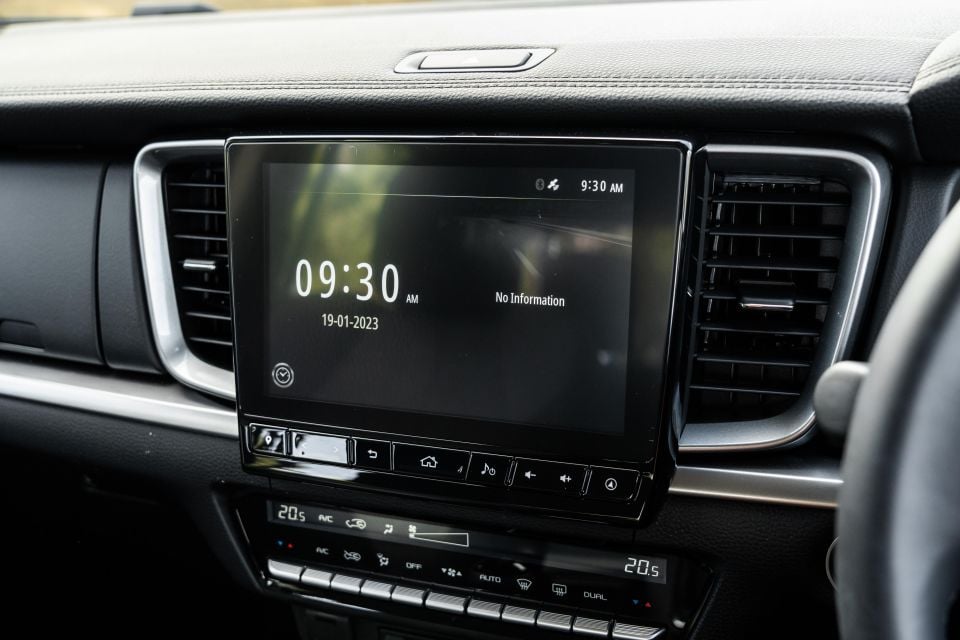
The screen itself is good to look at with its matte finish, but picks up fingerprints and reflections like nothing else. The native user interface is also really dark for the most part, which amplifies these imperfections.
You’d pick the portrait-oriented touchscreen in the Ford Ranger instead every day of the week, as the latter has better processing power and appears to have a higher resolution. With that said, that same feedback applies to every dual-cab ute on the market in 2023.
A range of hot keys under the touchscreen take you to key landing pages, turn the screen on, and adjust the volume. It’d be nice to have a volume dial though because it can get a little annoying rapidly tapping the same button to crank up my favourite songs.
Satellite navigation comes as standard on the BT-50 LE, and it’s very easy to search for places of interest. It’s great to be able to choose a number of different route options too.
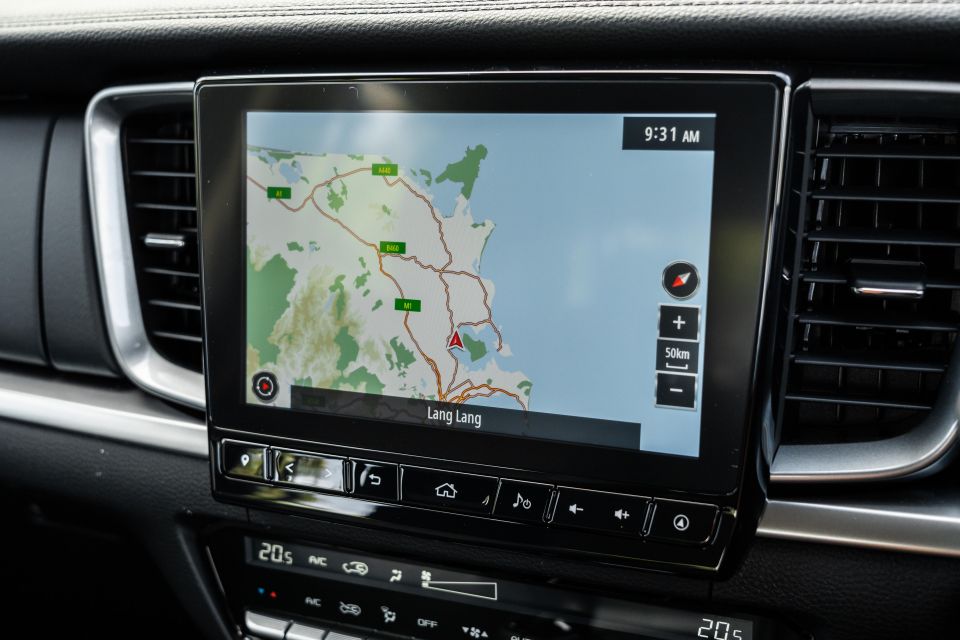
Apple CarPlay looks adequate on the touchscreen, and it’s even available in wireless form. It’s worth noting for those who own green message bubble phones Android Auto is wired only (we don’t discriminate based on phone here – Ed.).
Wireless Apple CarPlay typically takes at least a minute to load on startup, which can be quite frustrating. If you want to set a navigation destination, as an example, you either need to wait patiently or punch it in while you’re driving.
I experienced a number of wireless Apple CarPlay dropouts. Melbourne drivers who frequent Citylink in Docklands and the Chandler Highway exit on the Eastern Freeway know exactly what I’m talking about.
This problem is common in cars with wireless CarPlay, but the Mazda takes what feels like forever to reconnect relative to other systems. I spent this time prodding the touchscreen furiously to no avail.
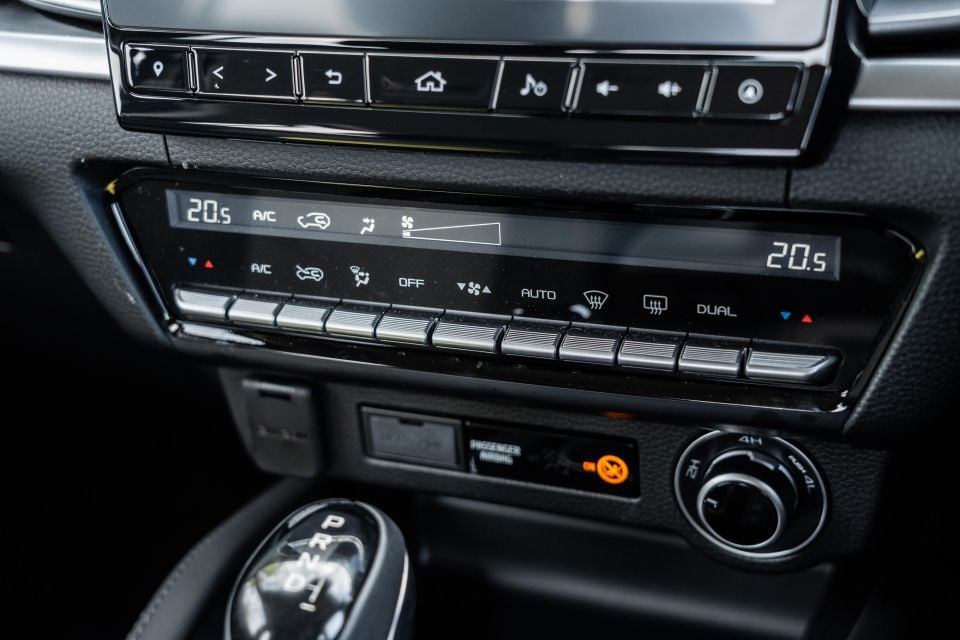
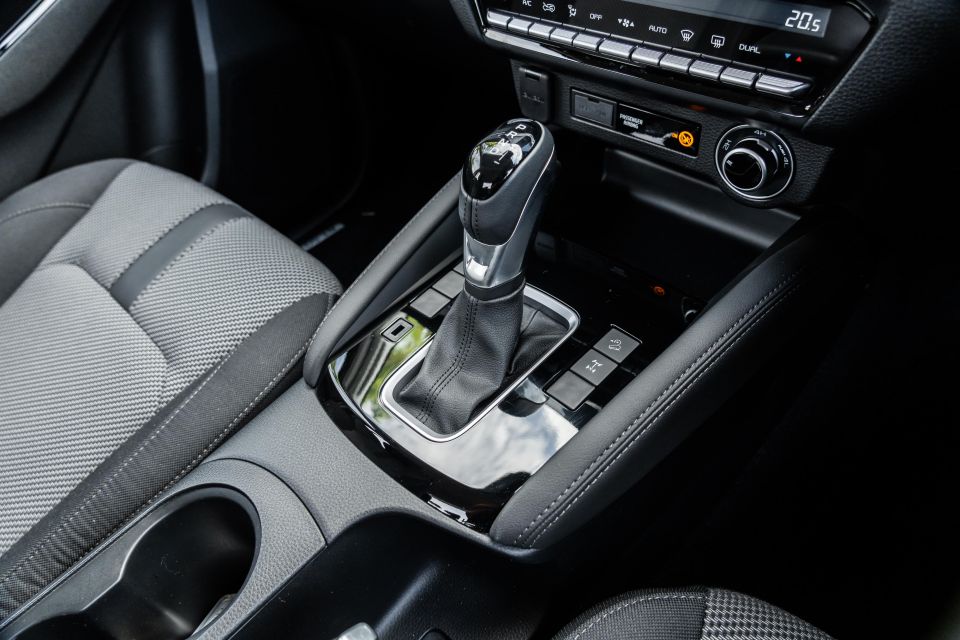
There’s no wireless phone charger which means you need to be careful when connected to wireless CarPlay that you don’t run out of battery. There is a generous space to store you phone ahead of the gear selector though.
The eight-speaker sound system has speakers above the heads of the front passengers which gives a sense of surround sound. The overall sound from the speakers is fine, but the Ranger’s standard six-speaker sound system is better.
Under the touchscreen is the dual-zone climate control cluster, with a row of tactile toggles that are nicely damped and easy to use if you have a pair of gloves on. The air-conditioning is strong too, which kept me cool on sweltering Melbourne days.
The main sections of the dash are covered in soft, padded leather-looking plastic. It’s quite plush for a work-oriented, mid-spec ute. You don’t have to look far to find harder-wearing plastics though.
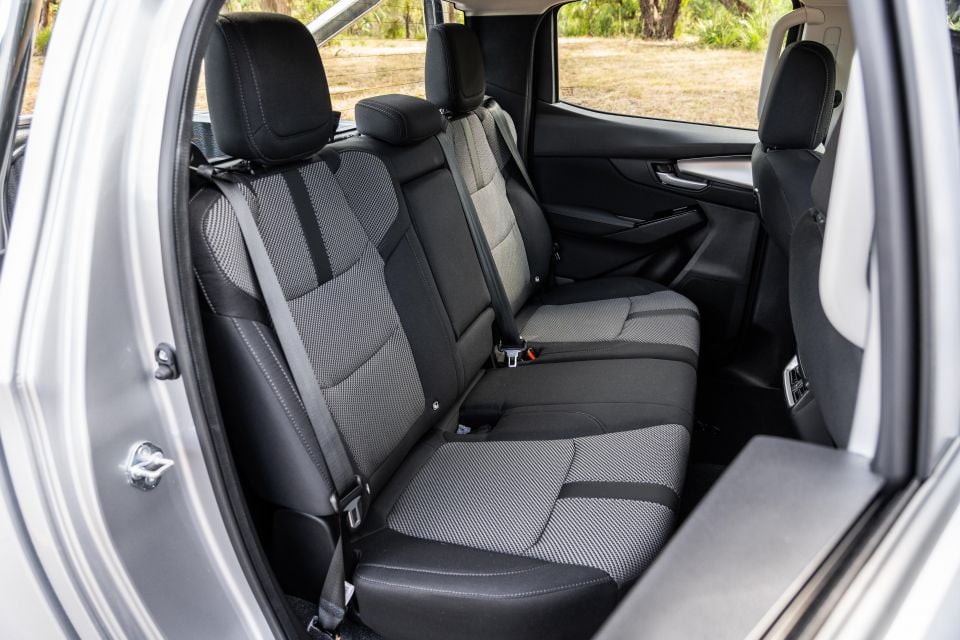
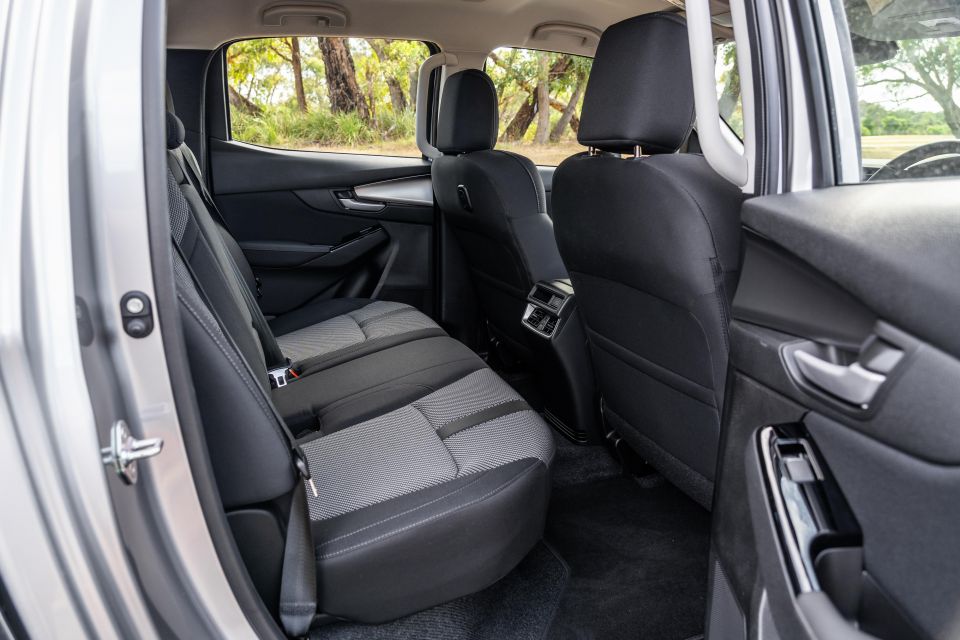
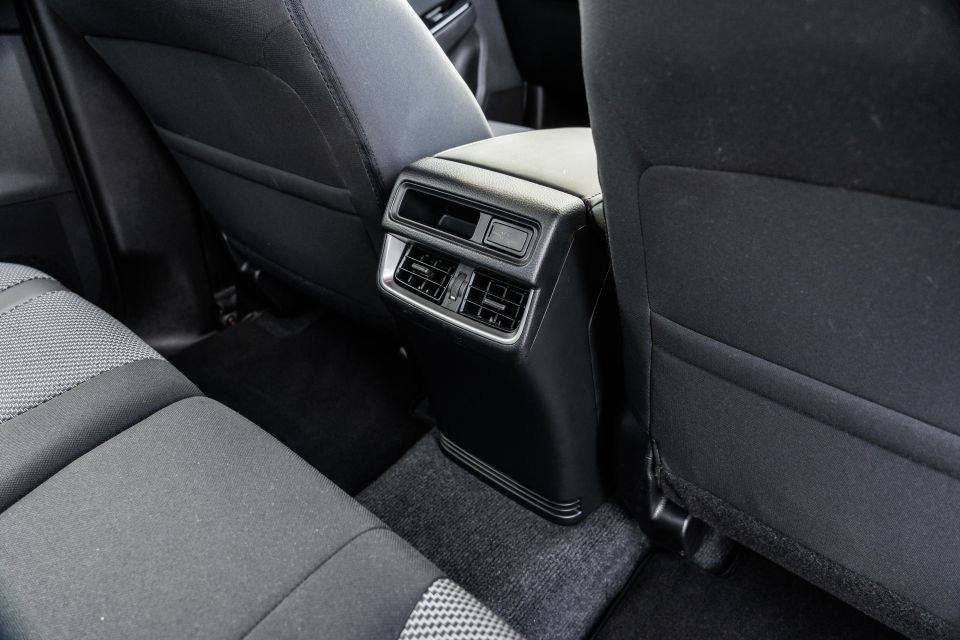
On the centre console there are blank buttons which suggests you cheaped out, and it’s largely covered in piano black which was really scratched and smudgy after just a week.
The cupholders on the centre console are two different shapes and so deep a coffee cup gets swallowed completely. There are also no teeth in them to hold bottles securely.
Moving into the second row, it’s not perfect for adults on long trips but kids will be fine. At a leggy 182cm, my knees rested firmly against the seat in front, and I had just enough headroom. All the main touch points in the second row are still soft and spongey, but it’s easier to find hard plastics.
Convenience items include a handy hook on the backrest of the front passenger’s seat, air vents, and a USB port. There are also a number of grab handles to assist in getting in and out.
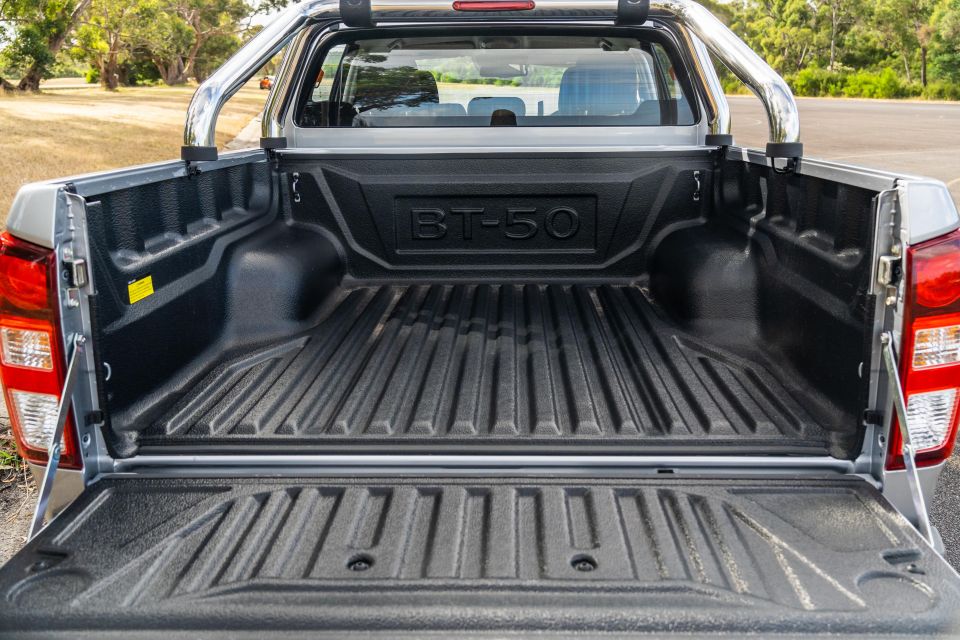
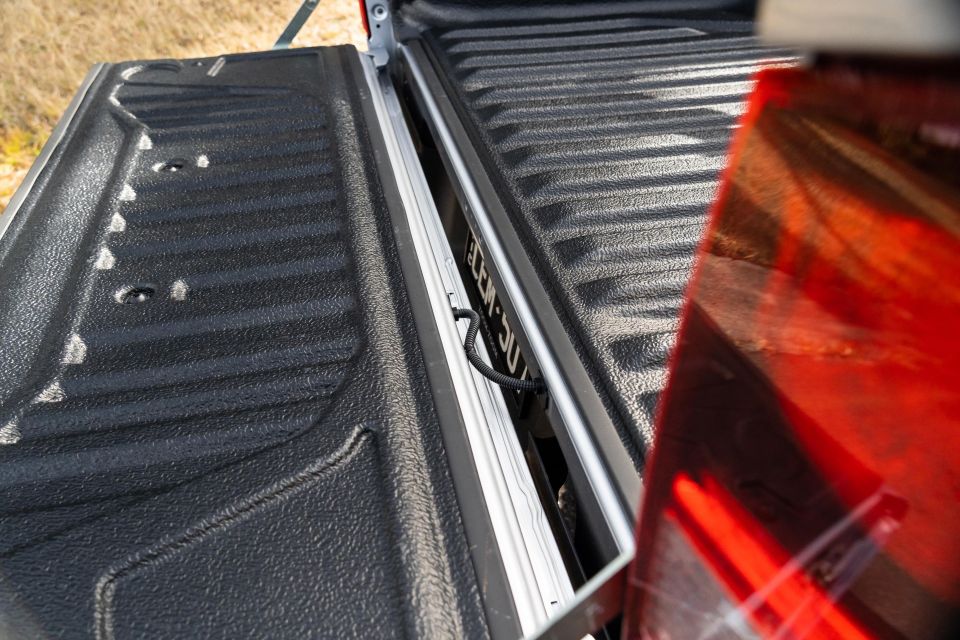
The tub on the BT-50 LE measures in at 1571mm long, 1530mm wide, and 490mm wide. Between the wheel arches is 1120mm. The LE makeover includes a heavy-duty tub liner and a polished sports bar usually optional on the XTR.
The tailgate itself is extremely heavy as it’s not assisted by any kind of strut or torsion bar. It’s also not part of the central locking, which means when you lock the ute you need to manually lock the tailgate.
If you didn’t know the tailgate wasn’t included in the central locking and you left something of value in the tub, it could get stolen very easily. As it turns out, this is quite common in the dual-cab segment.
The Mazda BT-50 LE is powered by a familiar 3.0-litre four-cylinder turbo-diesel engine that produces 140kW of power and 450Nm of torque.
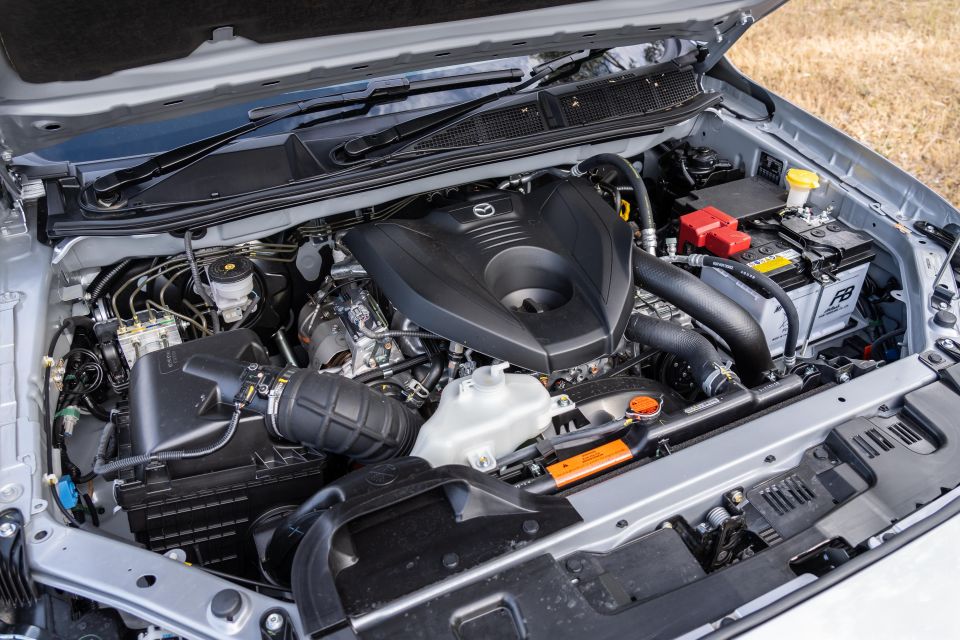
This exact engine is also available in the Isuzu D-Max ute, as well as the Isuzu MU-X SUV. The BT-50 is down on both power and torque compared to some rivals, as the segment benchmark currently hovers around 150kW and 500Nm.
The turbo-diesel engine is mated to a six-speed torque-converter automatic transmission, with drive sent through a part-time four-wheel drive system. There are 2H, 4H, and 4L drive modes, as well as a locking rear differential.
Claimed combined fuel economy for the BT-50 LE is 8.0 litres per 100km, though during our time with the ute we saw an average of 9.6 litres per 100km over 650km of highway and city driving. All BT-50 models have a 76-litre fuel tank.
Mazda claims a 3500kg braked towing capacity, while unbraked towing is 750kg. Payload for the BT-50 LE is 1000kg.
Starting the Mazda BT-50 LE you’re greeted with a familiar diesel grumble that teleports me back to hearing my Dad start his ute at stupid o’clock on the farm.
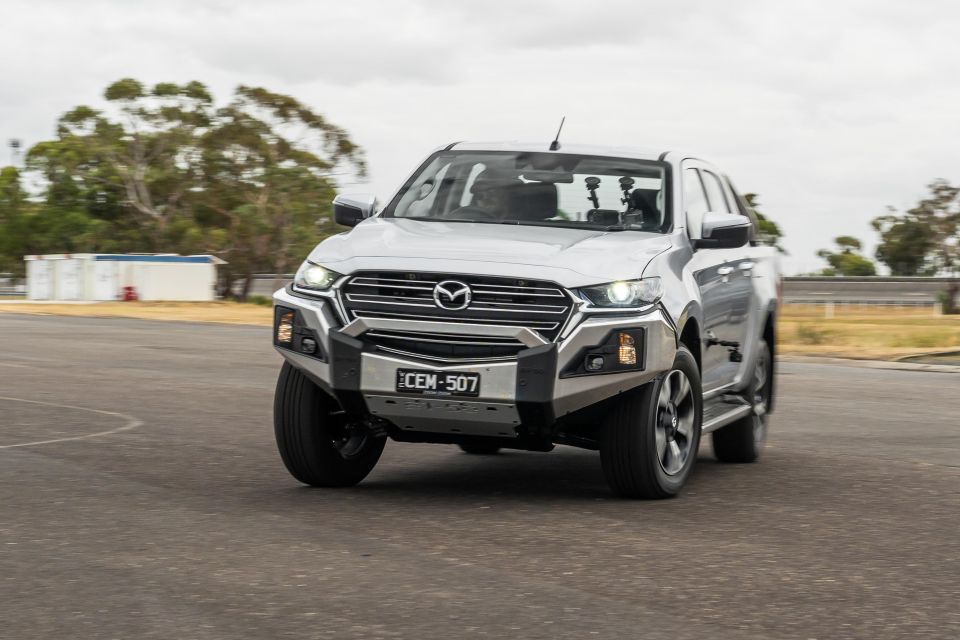
The idle can be loud and gruff before the engine warms up properly, which is to be expected on a work ute.
When the BT-50 LE is completely unladen the engine feels quite strong. From 0-30km/h it’s pretty quick and you’ll be keeping up with the majority of city traffic from the lights.
This sense of speed doesn’t last long though, as from 30km/h and above it has to work harder to pick up momentum.
This is made even worse when you’re towing as the extra weight really holds the BT-50 back and you need to pick your battles when pulling out into traffic, as we discovered during our recent Ute of the Year testing. That same complaint was aimed at plenty of its four-cylinder rivals.
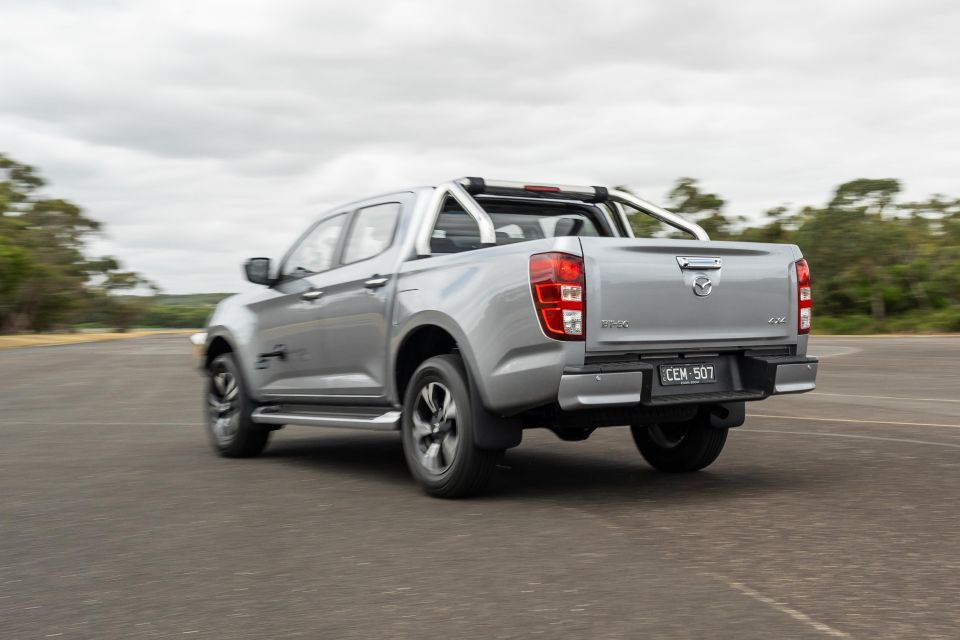
Where expert car reviews meet expert car buying – CarExpert gives you trusted advice, personalised service and real savings on your next new car.
If you really push it the engine gets quite loud and revs hard, which again is to be expected in a work-oriented ute.
I found the six-speed automatic in the BT-50 to be quite slick under light loads. There’s no need to push the 3.0-litre four-cylinder turbo-diesel engine as peak torque comes on tap from 1600rpm.
Driving in the city with no load in the tray the front suspension felt quite compliant, but the rear truly slapped over speed bumps and felt busy in general. It just never settles, which is a common criticism of unladen utes.
The steering in the BT-50 is quite light in low-speed scenarios and makes you feel like you’re driving something a lot smaller than it is. There’s no getting over the size of the ute though as parking can be a bit of a nightmare at times due to its overall length.
The genuine bull bar on the BT-50 LE makes this even worse as the overall length is extended by around 10 to 15cm.
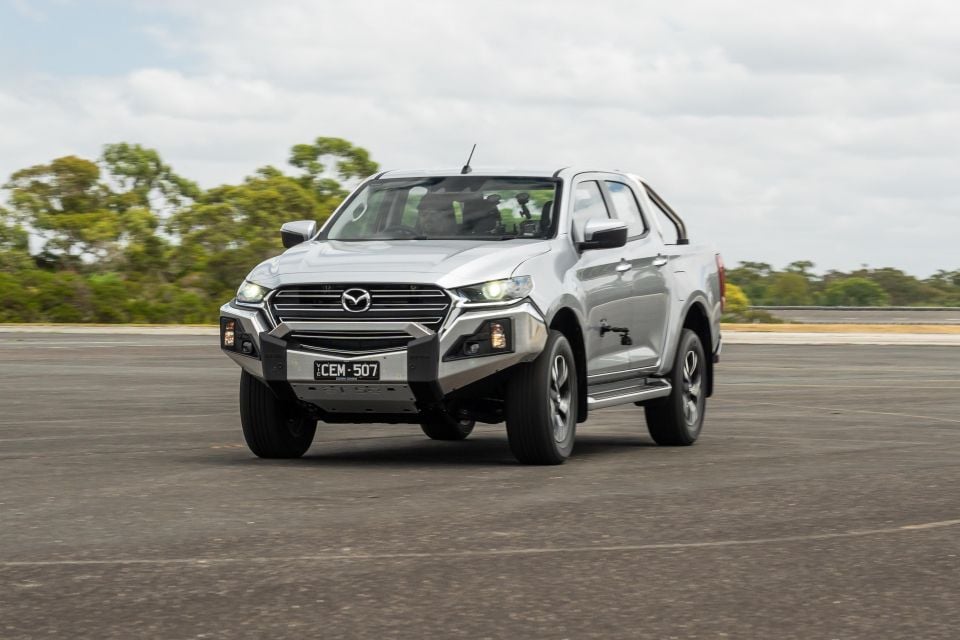
You need to be really careful when pulling up behind something because if you’re not aware of how much the bull bar sticks out, you’ll be hitting the thing in front of you before you realise.
The moment the speed is dialled up in the BT-50 LE it almost instantaneously settles down. You can only really hear the wind noise from the large side mirrors.
Despite the light-feeling steering in urban situations, the ute felt really planted and controllable on highways and freeways.
Its suspension setup smoothed out the majority of the rough edges at high speeds too, though over continuous bumps it felt a little floaty at the top end of the suspension travel. From the driver’s seat it can have you feeling like you’re on a rollercoaster.
It’s obvious the BT-50 is geared more towards rural buyers who will drive on rough roads with a load in the back, or are towing something.
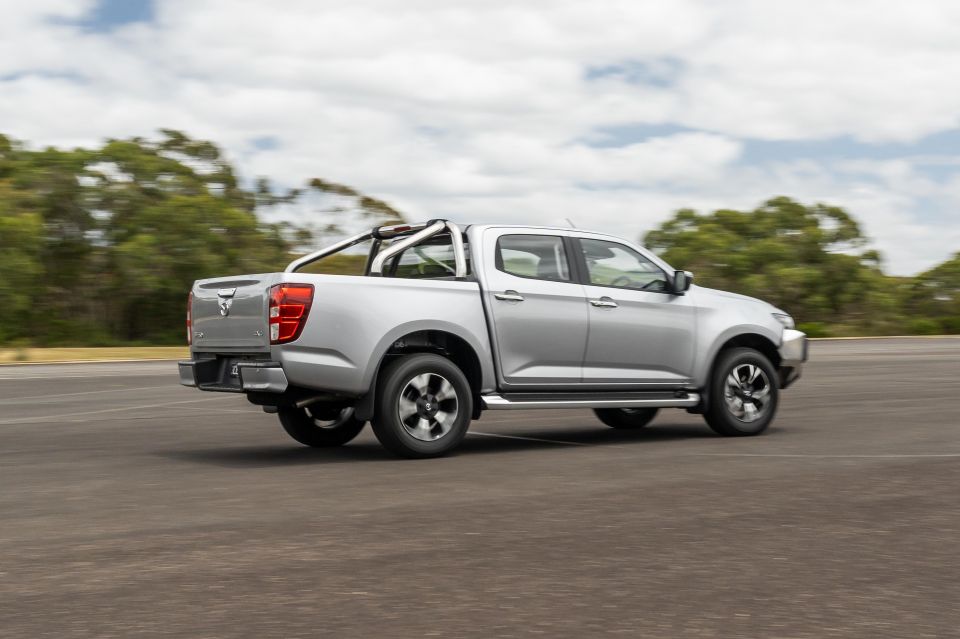
The adaptive cruise control for the most part works as intended. It’s very easy to activate from the steering wheel controls and can be clearly seen on the small digital instrument screen.
It reacts to other cars quite naturally and appropriately; if another car pulls ahead of you it doesn’t instantly slam on the brakes and instead allows it to pull ahead gradually.
I did experience one strange interaction though in the Burnley tunnel where the cruise got confused and couldn’t tell if a car was in front of me. It would rapidly accelerate as if the car wasn’t there and then slam on the brakes hard when it eventually saw the car.
At some points it even turned on the autonomous emergency braking (AEB) system which saw bright lights get thrown up in my face. It does a great job of getting your attention though!
We’ve reached out to Mazda to understand why this might have happened.
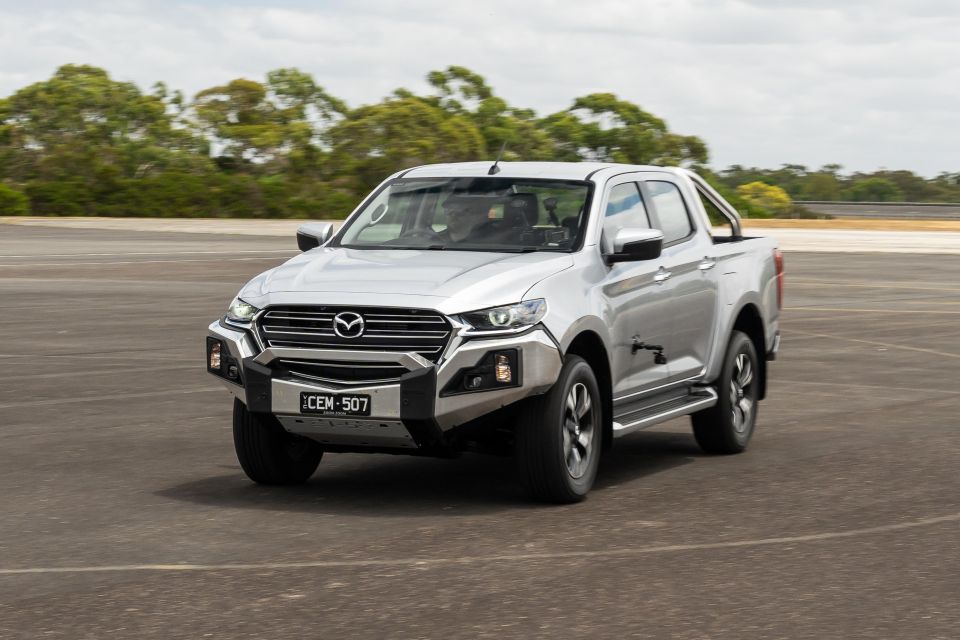
Speaking of driver assists, the lane-keeping can be annoying as it bounces the ute around the lane and gets confused easily when the lane markings fade.
Thankfully the feedback the lane-keeping assist gives the driver is limited to light vibrations in the steering wheel. The system can also be turned off with a conveniently-located button on the steering wheel.
When I took the BT-50 off-roading last year on Fraser Island, our group was all explicitly told to switch off all the traction control and driver assist aids.
It’s obvious they would hamper our experience as the AEB system could activate midway through a water crossing, for example, and leave you stranded and in need of a tow to dry land.

The four-wheel drive system itself is simple to use, and it’s easy to understand what the system is doing during mode switches thanks to updates on the trip computer screen. You just have to remember if you’re on a sealed surface you need to have the ute in 2H.
The BT-50 is a capable vehicle off-road with its locking rear differential assisting in sending torque to the rear wheels evenly. There weren’t many times I was too worried about getting stuck as the ute just kept on chugging.
Even after six hours of severe off-road driving on washed-out tracks, it felt like the BT-50 could keep going for days. Myself on the other hand couldn’t get a cocktail any quicker.
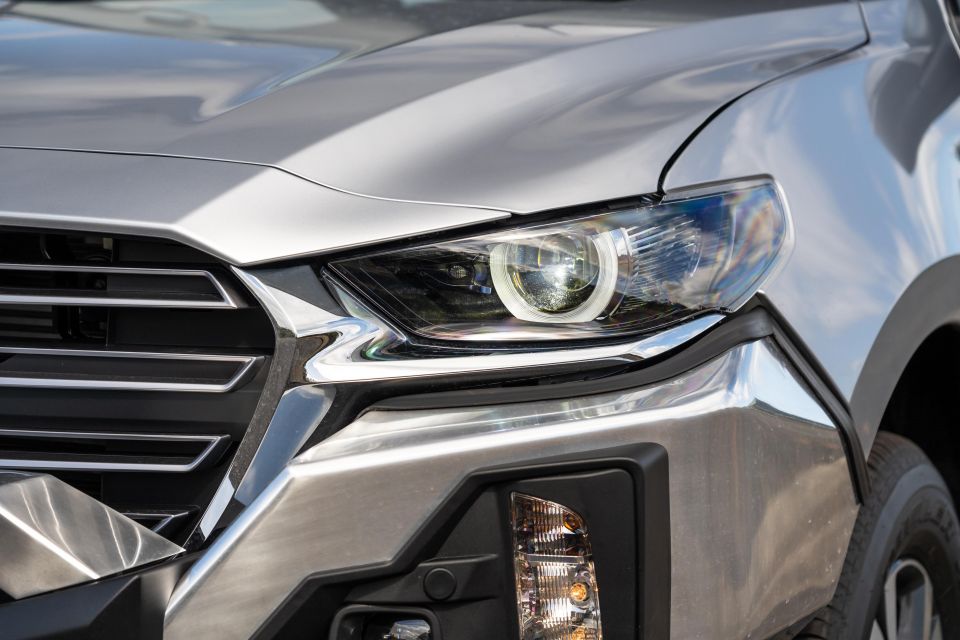

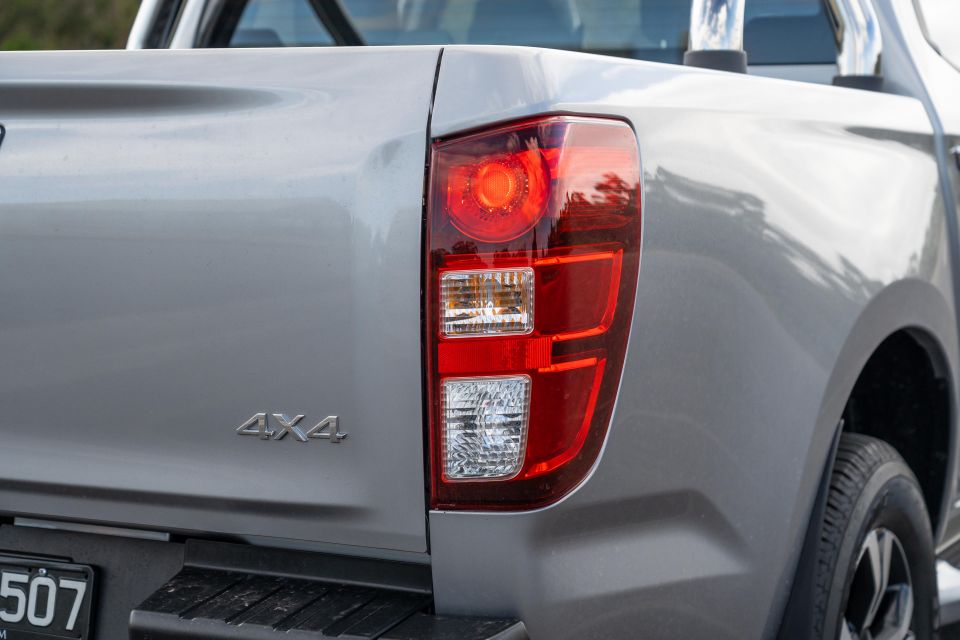

BT-50 LE highlights:
Exterior
Interior
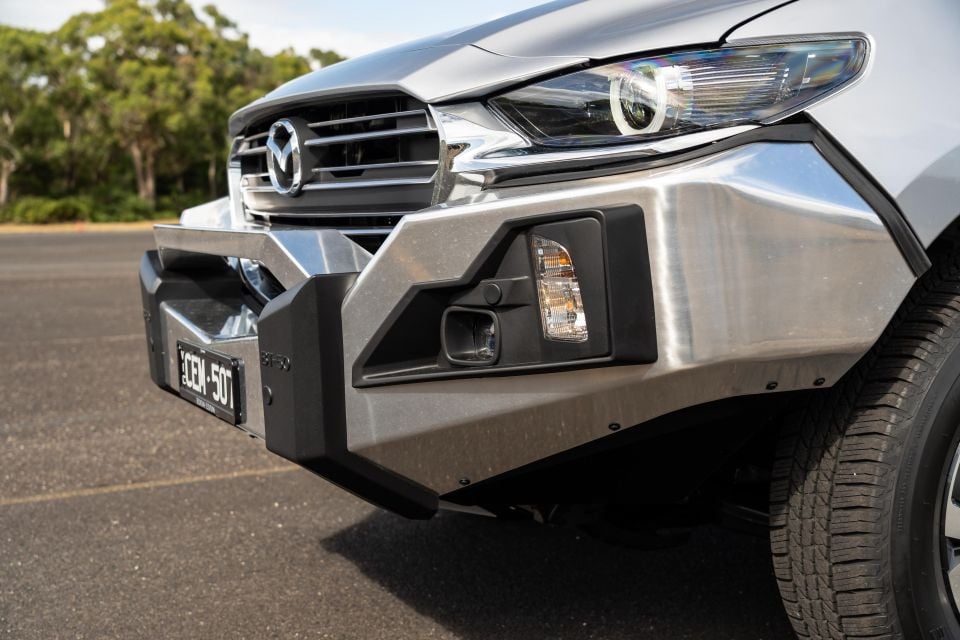
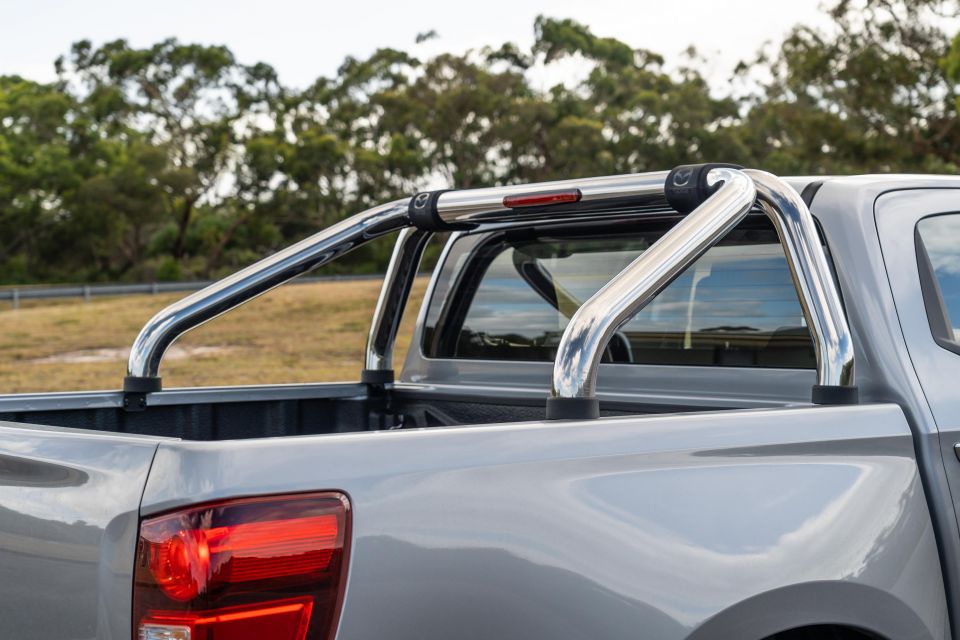
BT-50 GT adds:
BT-50 SP adds:
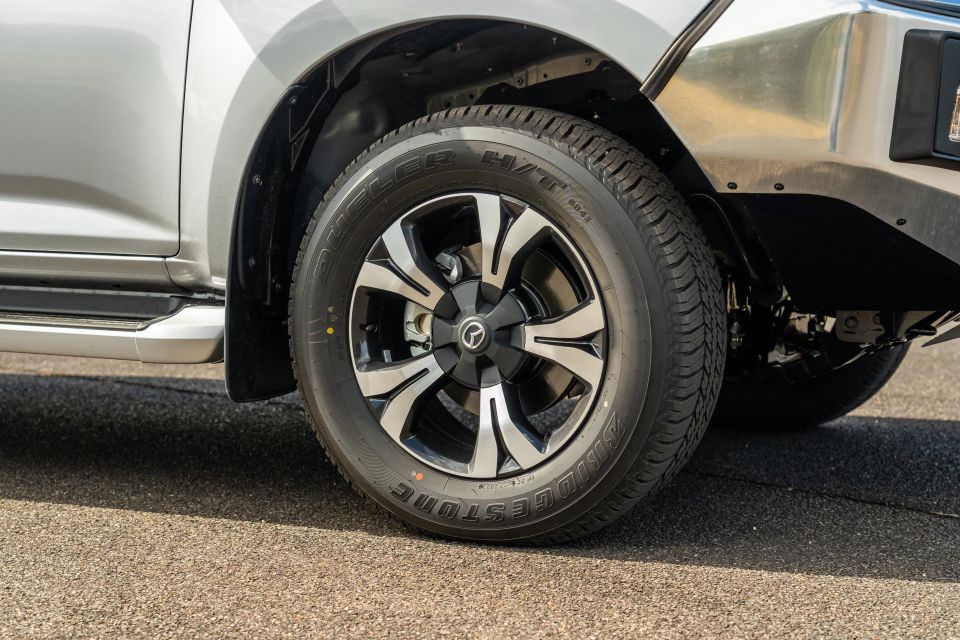

BT-50 Thunder adds (over GT):
The Mazda BT-50 wears a five-star ANCAP safety rating with a 2022 date stamp, based on tests conducted on the related Isuzu D-Max. This rating applies to all variants bar the BT-50 Thunder.
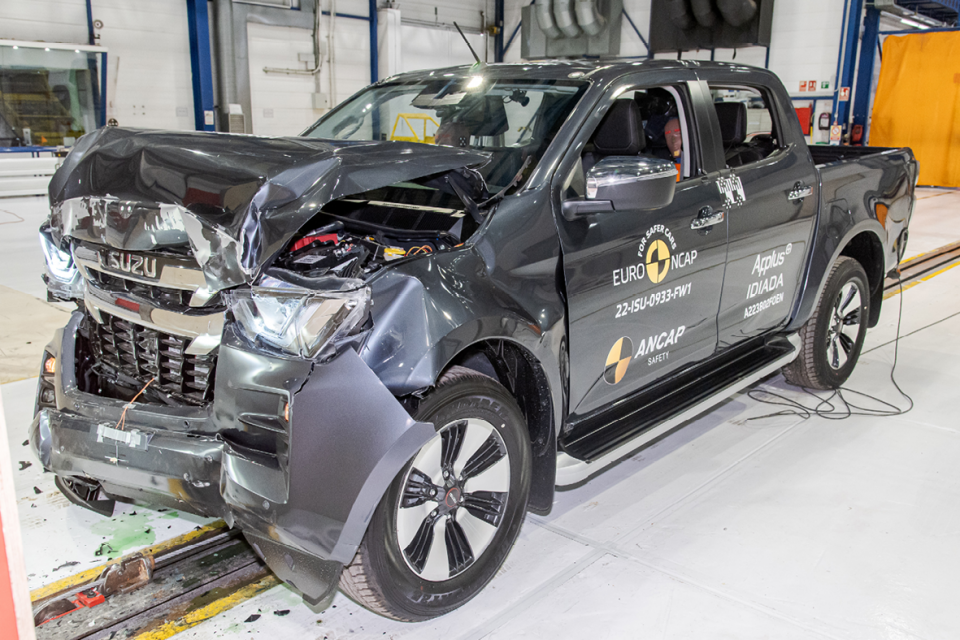
The utes were recently reassessed despite having already received five-star ratings in 2020, as the D-Max and BT-50 received a design change to the driver’s knee airbag and instrument panel.
The BT-50 received scores of 86 per cent for adult occupant protection, 89 per cent for child occupant protection, 67 per cent for vulnerable road user protection, and 84 per cent for safety assist.
It’s worth noting the BT-50’s unique front end compared to its Isuzu twin garnered a slightly weaker pedestrian protection score (from 69 per cent).
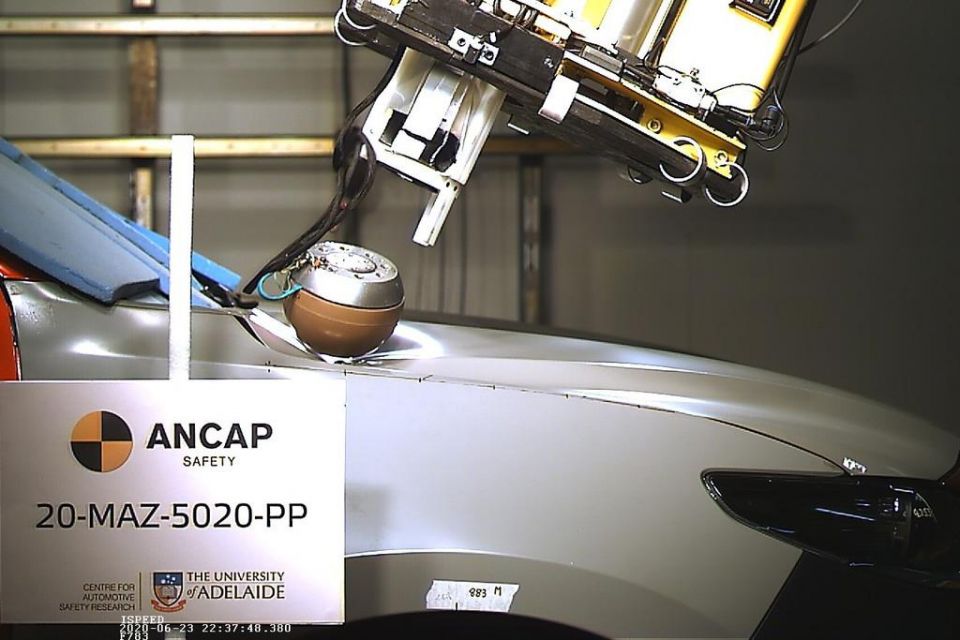
Standard safety features include:
Automatic models also feature lane-keep assist and adaptive cruise control. XTR variants and above get tyre pressure monitoring which is new for 2023.
The Mazda BT-50 is covered by a five-year, unlimited-kilometre warranty with roadside assistance for the same period.
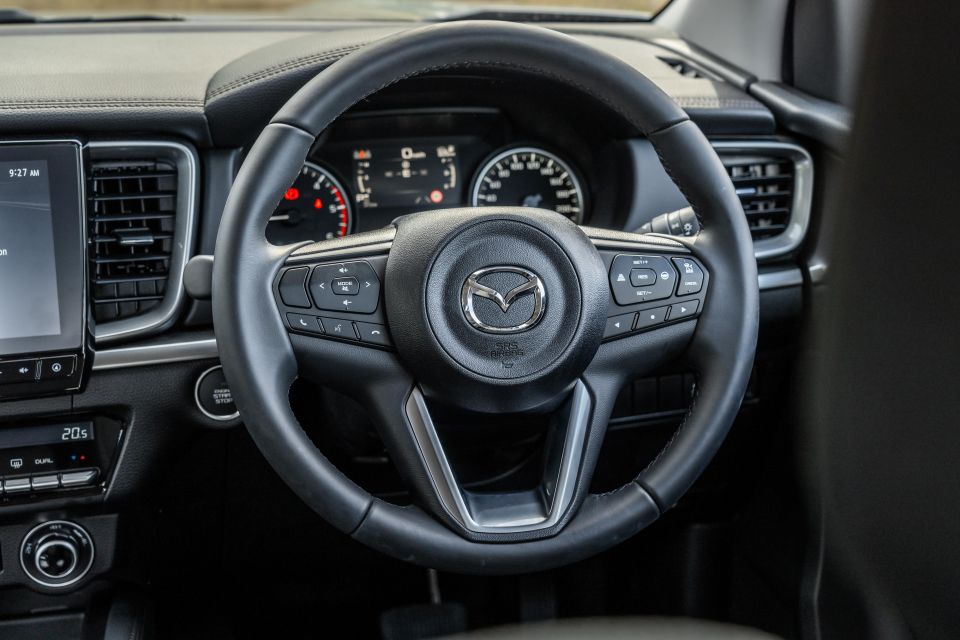
Logbook servicing is required every 12 months or 15,000 kilometres, whichever comes first.
Service prices vary depending on the model, but the first five services are capped at $443, $409, $699, $524, and $329 in the LE 3.0-litre 4×4 dual-cab pickup. This equates to $2404 over five years.
This five-year total service pricing is considerable more expensive than the Ranger Bi-Turbo ($1696), and line-ball with the related D-Max ($2435).
It is cheaper to service over five years though than the HiLux ($3766) which only has shorter six-month or 10,000km service intervals and three-years of capped price servicing.
The Mazda BT-50 is a solid alternative to the top-selling Ford Ranger or Toyota HiLux.
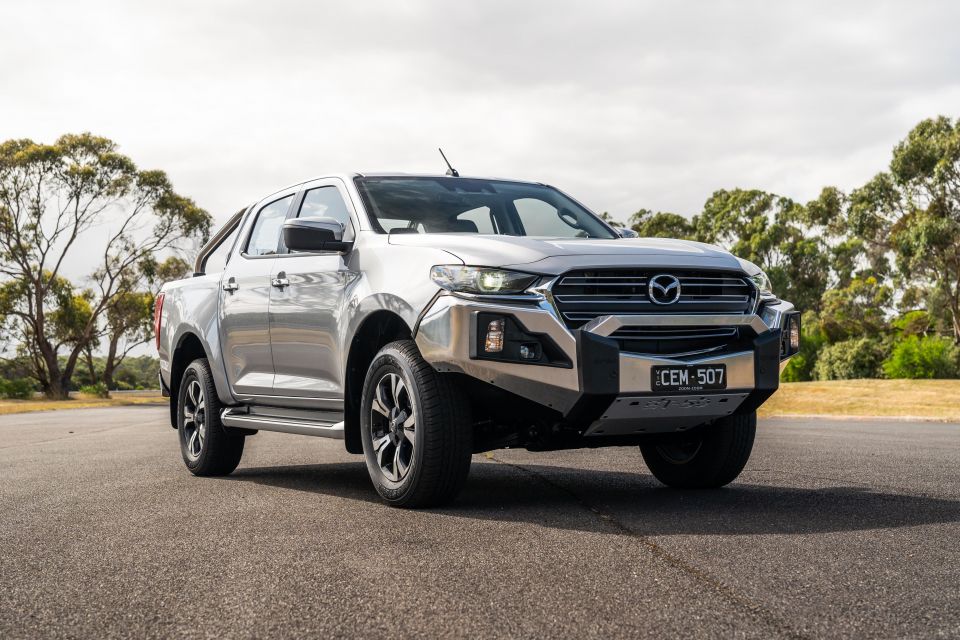
It’s quite SUV-like to look at inside and out, has some soft interior trimmings, and has the ability to be a work ute for day-to-day use, or a lifestyle vehicle for your family.
In LE spec as tested here, the $5000+ price premium you pay over the workhorse XTR spec it’s based on doesn’t feel justified as you can buy a more premium Ranger Sport or D-Max LS-U+ for around the same price.
Sure you miss out on the genuine accessories, but not everyone wants a huge chrome bull bar that sticks out a fair way on the front bumper. It’s also really frustrating the BT-50 LE is only available in silver.
If you’re set on getting a BT-50 (and aren’t married to the accessory suite), opt for the XTR instead as you’ll pay less and still get all the features the LE has, including the hard-wearing fabric seats and plush steering wheel.
You can even get the BT-50 GT instead of the LE variant and pay less. You’ll also get luxury-focused features including leather upholstery and heated front seats.

Click an image to view the full gallery
MORE: Everything Mazda BT-50
Where expert car reviews meet expert car buying – CarExpert gives you trusted advice, personalised service and real savings on your next new car.
Jack Quick is an automotive journalist based in Melbourne. Jack studied journalism and photography at Deakin University in Burwood, and previously represented the university in dance nationally. In his spare time, he loves to pump Charli XCX and play a bit of Grand Theft Auto. He’s also the proud owner of a blue, manual 2020 Suzuki Jimny.


William Stopford
1 Month Ago


Paul Maric
21 Days Ago


Max Davies
16 Days Ago
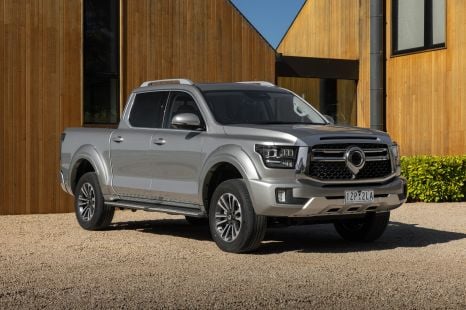

Marton Pettendy
8 Days Ago


Josh Nevett
8 Days Ago
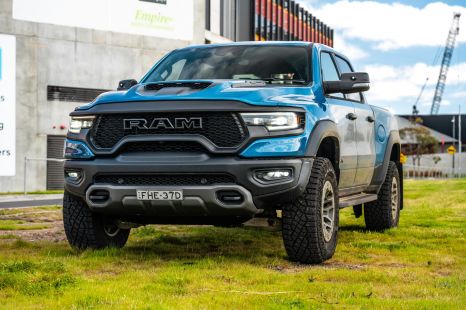

Max Davies
6 Days Ago